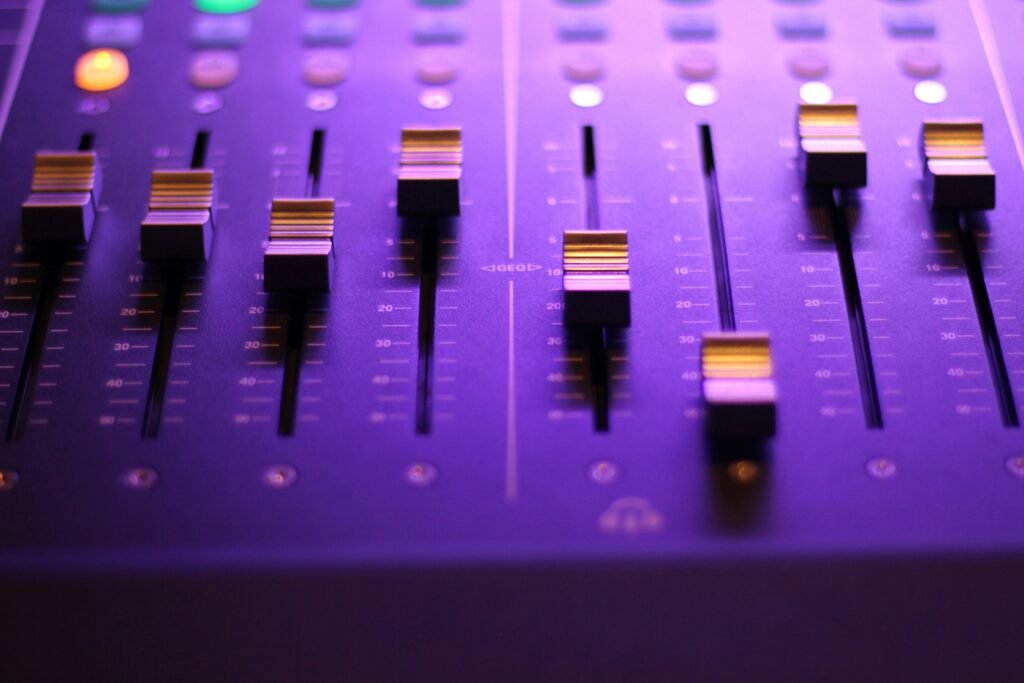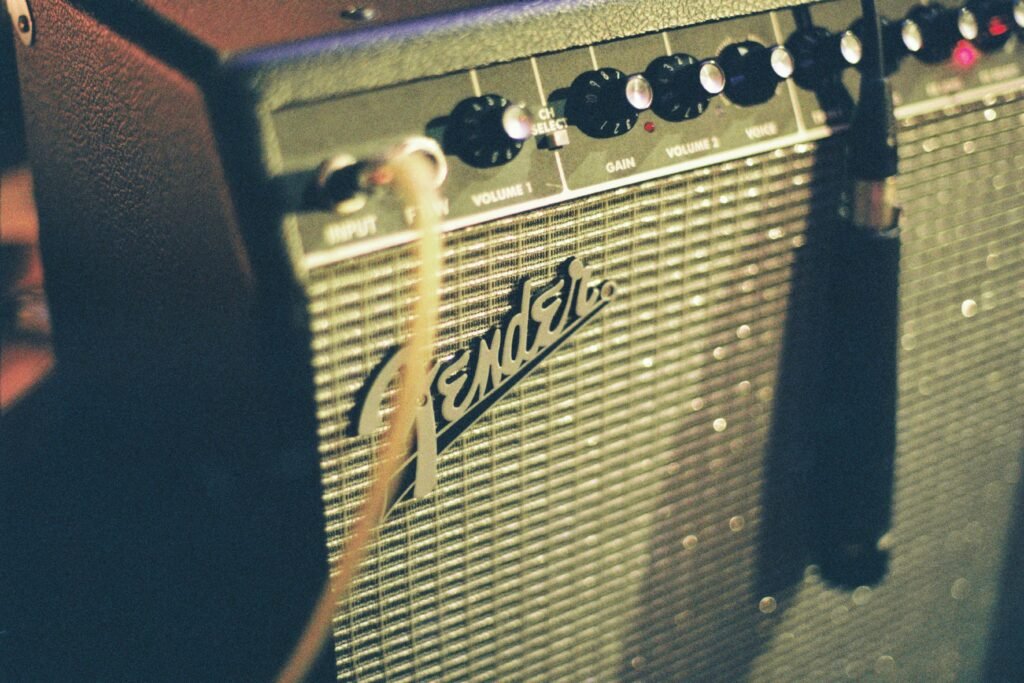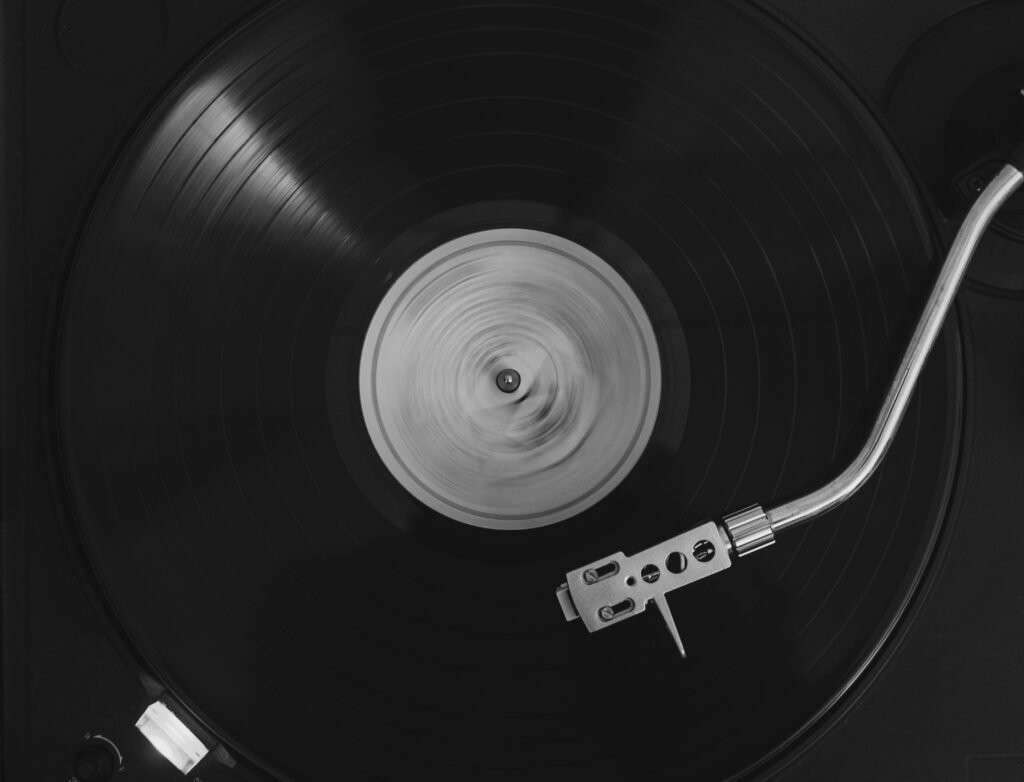Billie Eilish’s second studio album, “Happier Than Ever,” marks a significant evolution in her discography, building upon the foundations laid by her groundbreaking debut, “When We All Fall Asleep, Where Do We Go?” Released in July 2021, “Happier Than Ever” arrives at a time when Eilish’s influence on the music industry is undeniable, with her unique blend of ethereal vocals, moody production, and introspective lyrics having set new standards for contemporary pop. Unlike her debut, which leaned heavily into themes of existential dread and teenage angst, this album reflects a more nuanced exploration of personal growth and self-reflection, influenced by the artist’s rapid ascent to global stardom.
In the broader music landscape, “Happier Than Ever” resonates as a beacon of authenticity and vulnerability. It stands out in an era dominated by hyper-produced pop anthems, offering a raw and unfiltered glimpse into Eilish’s inner world. The album’s soundscape continues to defy genre conventions, blending elements of pop, jazz, and electronica, and further establishing Eilish’s reputation as a pioneer of modern music.
Artistic Intentions
Billie Eilish and her brother, Finneas O’Connell, who is the album’s primary producer, have articulated that “Happier Than Ever” is a deeply personal project, reflecting the tumultuous journey Eilish has experienced since her rise to fame. In interviews and social media posts, Eilish has expressed her desire to convey the complexities of happiness and fame, dismantling the illusion that success equates to contentment. The album is an exploration of identity, mental health, and the often-overlooked pressures of being in the public eye.
Eilish aimed to create an album that resonates on a personal level with listeners, offering solace and understanding through its candid storytelling. The title track, “Happier Than Ever,” epitomizes this mission, encapsulating the emotional highs and lows that come with self-discovery and the pursuit of happiness. Through this album, Eilish invites her audience to join her on a journey of introspection and emotional resilience, challenging them to confront their own perceptions of joy and fulfillment.
Sonic Exploration

Production Quality
“Happier Than Ever” showcases meticulous production, a testament to the collaborative synergy between Billie Eilish and her brother, Finneas O’Connell. The production values are exceptionally high, balancing crisp, clear sounds with occasional lo-fi elements that add a gritty, raw texture to the album. This duality enhances the album’s emotional depth, allowing the listener to experience the intimate, vulnerable moments with clarity while also embracing the imperfections that underscore Eilish’s authenticity.
The production style serves the album’s themes and mood by creating an immersive sonic environment that mirrors the complexity of Eilish’s emotional landscape. Tracks like “My Future” and “Therefore I Am” exemplify this blend, where polished, sophisticated production meets stripped-back, introspective moments, creating a dynamic listening experience that reflects the album’s exploration of personal growth and self-discovery.
Musical Arrangements
The musical arrangements on “Happier Than Ever” are both innovative and memorable, characterized by their minimalistic yet impactful approach. Eilish’s haunting vocals are often front and center, supported by Finneas’s intricate production work that includes a mix of traditional instruments and electronic elements.
Songs like “NDA” and “Lost Cause” feature sparse, yet powerful arrangements where deep bass lines and percussive beats create a dark, brooding atmosphere. In contrast, tracks such as “Billie Bossa Nova” and “Oxytocin” incorporate jazzy chords and Latin-inspired rhythms, showcasing Eilish’s versatility and willingness to experiment with different sounds.
One of the standout arrangements is the title track, “Happier Than Ever,” which starts as a soft, acoustic ballad before transforming into a cathartic rock anthem. This transition is both unexpected and exhilarating, emphasizing the song’s emotional narrative and Eilish’s dynamic vocal range.
Genre Elements
“Happier Than Ever” defies easy genre classification, blending a variety of musical styles to create a unique sonic palette. The album touches upon pop, jazz, electronica, and even elements of rock, seamlessly weaving these influences together in a way that feels fresh and original.
Eilish and Finneas have mastered the art of genre-blending, creating tracks that are simultaneously accessible and avant-garde. “My Future” incorporates soulful, jazz-inspired melodies with modern pop sensibilities, while “Oxytocin” fuses pulsating electronic beats with dark, atmospheric undertones reminiscent of industrial music.
This genre-bending approach not only highlights Eilish’s versatility as an artist but also reinforces the album’s overarching themes of complexity and introspection. By refusing to be confined to a single style, “Happier Than Ever” stands as a testament to Eilish’s innovative spirit and her commitment to pushing the boundaries of contemporary music.
Lyrical Analysis

Themes and Messages
The central themes of “Happier Than Ever” revolve around self-discovery, the duality of fame, emotional resilience, and the pursuit of authentic happiness. Billie Eilish uses her lyrics to navigate the turbulent waters of young adulthood, grappling with the highs and lows of her rapid rise to fame.
In songs like “Getting Older” and “Not My Responsibility,” Eilish addresses the pressures of public scrutiny and the often unrealistic expectations placed upon her. The recurring motif of introspection is evident throughout the album, with Eilish delving into her inner conflicts, relationships, and personal growth. “Your Power” explores themes of power dynamics and exploitation, shedding light on the darker aspects of relationships and the music industry. The title track, “Happier Than Ever,” encapsulates the bittersweet realization that true happiness is often found within, rather than through external validation.
Lyrical Depth
Eilish’s lyrics in “Happier Than Ever” are a blend of straightforward narrative and abstract poetics, offering listeners a rich tapestry of emotion and insight. The lyrics are marked by their candidness and vulnerability, often revealing the artist’s innermost thoughts and feelings in a raw, unfiltered manner.
Tracks like “Male Fantasy” and “Halley’s Comet” showcase Eilish’s ability to weave intricate stories with a poetic touch, using vivid imagery and metaphor to convey deeper meanings. In “My Future,” the lyrics are both hopeful and introspective, reflecting a sense of optimism about personal growth and self-reliance. Eilish’s songwriting is characterized by its relatability and depth, making her themes accessible while leaving room for personal interpretation.
Emotional Impact
The lyrics of “Happier Than Ever” significantly contribute to the album’s emotional resonance, evoking a wide range of feelings from empathy and contemplation to joy and melancholy. Eilish’s ability to convey complex emotions with simplicity and grace allows listeners to connect with her experiences on a profound level.
In songs like “Everybody Dies,” the existential themes and poignant delivery evoke a deep sense of contemplation and existential reflection. “Happier Than Ever,” with its stark contrast between the tender, acoustic beginning and the explosive, cathartic finale, takes the listener on an emotional rollercoaster, embodying the turmoil of heartbreak and liberation.
Eilish’s lyrical honesty and emotional transparency create an intimate connection with the audience, making “Happier Than Ever” a powerful and cathartic listening experience. The album not only showcases Eilish’s growth as an artist but also invites listeners to reflect on their own journeys, offering solace and understanding through its heartfelt and evocative storytelling.
Cohesion and Flow

Track Progression
“Happier Than Ever” excels in its seamless track progression, guiding the listener through a well-constructed narrative and emotional journey. The album opens with “Getting Older,” setting the tone for introspection and personal growth that permeates the rest of the tracks. Each song transitions smoothly into the next, maintaining a steady emotional arc that mirrors Eilish’s journey from vulnerability to empowerment.
The flow of the album is meticulously curated, with quieter, more introspective songs like “Your Power” and “Male Fantasy” punctuated by more dynamic tracks like “Therefore I Am” and “Oxytocin.” This balance keeps the listener engaged, providing a rhythmic ebb and flow that mirrors the emotional highs and lows Eilish experiences. The title track, “Happier Than Ever,” serves as a climactic moment, with its dramatic shift from a soft ballad to an explosive anthem encapsulating the album’s overarching themes of transformation and self-realization.
Thematic Consistency
The thematic consistency of “Happier Than Ever” is one of its strongest attributes. Eilish and Finneas have crafted an album that maintains a cohesive identity, both sonically and lyrically. The themes of self-discovery, the challenges of fame, and the quest for genuine happiness are woven throughout each track, creating a unified narrative that resonates deeply with the listener.
Musically, the album’s style remains consistent, with a blend of minimalist production and intricate arrangements that provide a distinctive, cohesive sound. Even as Eilish explores various genres, the underlying mood and tone of the album are maintained, ensuring that each track feels like a part of a larger, interconnected story.
There are no jarring shifts in style or theme; instead, the album’s diversity in sound enhances its narrative depth. The transitions between different musical elements—from the jazzy undertones of “Billie Bossa Nova” to the electronic pulses of “Oxytocin”—are handled with finesse, contributing to a sense of continuity and coherence.
Standout Tracks and Moments
Highlight Key Tracks
Several tracks on “Happier Than Ever” stand out for their artistic merit, innovation, and emotional impact, each offering a unique glimpse into Billie Eilish’s creative evolution.
“Happier Than Ever”: The title track is a defining moment of the album. It starts as a gentle acoustic ballad, with Eilish’s soft vocals accompanied by minimal instrumentation, gradually building up to an explosive rock anthem. This track encapsulates the album’s emotional journey, capturing the rawness of heartbreak and the cathartic release of moving on.
“Your Power”: This haunting, acoustic-driven song addresses the abuse of power and exploitation, with poignant lyrics that resonate deeply. Eilish’s vocal delivery is both delicate and powerful, conveying a sense of vulnerability and strength that makes it one of the most impactful tracks on the album.
“Oxytocin”: A standout for its pulsating electronic beats and seductive energy, “Oxytocin” diverges from the album’s more introspective moments, showcasing Eilish’s versatility. The song’s intense rhythm and dark, alluring lyrics make it a captivating listen.
“My Future”: This track beautifully blends soulful jazz influences with modern pop, reflecting Eilish’s optimism and self-reflection. The shift from a melancholic ballad to an upbeat, self-assured anthem is executed flawlessly, symbolizing growth and hope.
Memorable Moments
“Happier Than Ever” is filled with moments that capture the essence of the album and showcase Eilish’s remarkable talent.
The Climactic Shift in “Happier Than Ever”: The transition from the soft, acoustic beginning to the explosive, rock-infused conclusion is one of the album’s most memorable moments. This dramatic change not only highlights Eilish’s dynamic vocal range but also serves as a powerful metaphor for emotional liberation.
The Lyric “Try Not to Abuse Your Power” in “Your Power”: This line succinctly encapsulates the song’s theme of exploitation and the importance of accountability. Eilish’s delivery of this line is both haunting and poignant, leaving a lasting impression.
The Bass Drop in “Oxytocin”: The intense bass drop and electronic beats create an exhilarating moment that contrasts sharply with the more subdued tracks on the album. This moment highlights Eilish’s ability to experiment with different sounds and maintain the album’s cohesiveness.
The Opening Lines of “Getting Older”: “I’m getting older, I think I’m aging well” sets the tone for the album’s introspective journey. These opening lines immediately draw the listener into Eilish’s personal reflections on fame, growth, and self-acceptance.
The Silence in “Male Fantasy”: The strategic use of silence in this track emphasizes the loneliness and introspection described in the lyrics. The pauses between verses create a contemplative space, enhancing the emotional impact of the song.
Artistic Contribution and Innovation

Place in Genre/Industry
“Happier Than Ever” solidifies Billie Eilish’s position as a trailblazer in the contemporary music scene, transcending the boundaries of traditional pop and redefining genre conventions. Her second studio album does not merely adhere to established norms but challenges and reshapes them, making a significant impact on the industry.
Eilish’s distinct sound—a fusion of minimalist pop, jazz, electronica, and rock—continues to set her apart from her peers. This genre-defying approach places “Happier Than Ever” at the forefront of a new wave of artists who prioritize authenticity and emotional depth over commercial formulae. The album’s introspective themes and unfiltered honesty resonate with a broad audience, cementing Eilish’s influence on both mainstream and indie music landscapes.
Innovation
“Happier Than Ever” is rife with innovative elements that push the boundaries of contemporary music, reflecting Eilish’s commitment to artistic evolution and experimentation.
Genre Fusion: The album masterfully blends various genres, creating a unique sonic landscape. Tracks like “Billie Bossa Nova” and “My Future” showcase Eilish’s ability to merge jazz influences with modern pop, while “Oxytocin” brings electronic and industrial sounds into the mix. This genre fusion not only highlights her versatility but also keeps the album fresh and unpredictable.
Dynamic Production: Finneas’s production work on the album is both intricate and groundbreaking. The use of sparse arrangements that gradually build into complex soundscapes—exemplified by the title track, “Happier Than Ever”—demonstrates a sophisticated understanding of musical dynamics. The album’s production values balance clarity with grit, creating a polished yet raw auditory experience.
Lyrical Honesty: Eilish’s lyrics are marked by their candidness and vulnerability. She tackles themes like power dynamics, self-discovery, and the pitfalls of fame with a raw, unfiltered approach that feels both personal and universal. This level of lyrical honesty is refreshing in an industry often dominated by superficial themes.
Innovative Sound Design: The album incorporates unconventional sound elements, such as the distorted bass in “NDA” and the layered vocal effects in “OverHeated.” These experimental choices add depth and texture to the tracks, making them stand out in a crowded musical landscape.
Narrative Structure: The album is structured with a clear emotional and narrative progression, guiding listeners through a journey of introspection and growth. This thoughtful arrangement enhances the storytelling aspect of the album, making it a cohesive and compelling body of work.
Closing Thoughts

“Happier Than Ever” showcases Billie Eilish’s growth as an artist, offering a compelling mix of emotional depth, genre experimentation, and innovative production. Its strengths lie in its candid lyrical content, dynamic production, and the seamless blending of various musical styles. Eilish’s ability to convey vulnerability and strength through her music makes this album a significant entry in her discography. Standout tracks like “Happier Than Ever,” “Your Power,” and “Oxytocin” highlight her artistic range and willingness to push creative boundaries.
However, the album is not without its weaknesses. Some listeners might find the pacing uneven, with a few tracks feeling less impactful compared to the standout moments. Additionally, while the minimalistic approach works for many songs, it might come across as overly sparse or repetitive to some, potentially diluting the overall impact.
“Happier Than Ever” is a powerful testament to Billie Eilish’s evolution as an artist, marking a significant chapter in her career. Its introspective themes and innovative sound are likely to resonate deeply with listeners, offering solace and understanding through its exploration of complex emotions and personal growth. This album not only solidifies Eilish’s place in the music industry but also sets a new standard for authenticity and creativity in contemporary music.
Official Rating
While “Happier Than Ever” is a remarkable album that demonstrates Billie Eilish’s artistic maturity and innovation, it receives a rating of 7 out of 10 due to its occasional pacing issues and the potential repetitiveness of its minimalist production. These minor drawbacks, however, do not overshadow the album’s overall impact and its contribution to modern music. It remains a bold and introspective work that pushes the boundaries of genre and showcases Eilish’s unique voice and vision.
